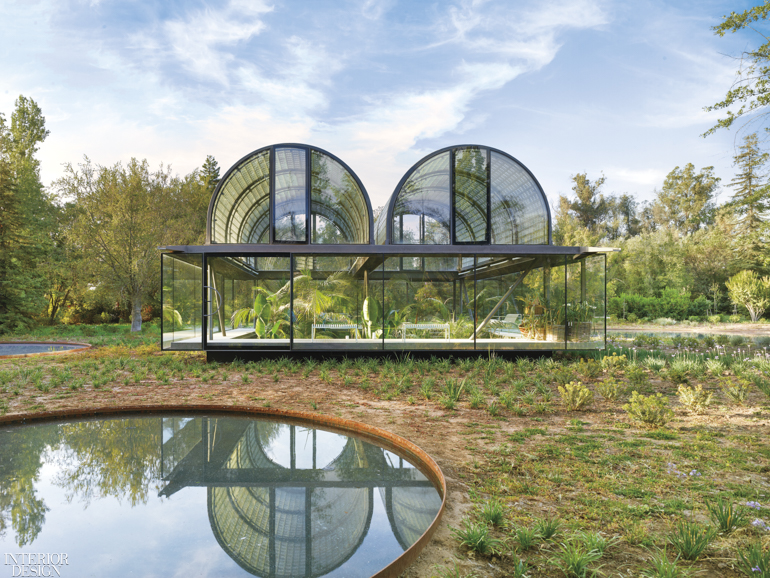8 Environmentally Friendly Projects for Earth Day
Though Kermit the Frog claims “it’s not easy being green,” architects and designers may disagree. Sustainability is a top priority for clients, designers, and manufacturers alike, but there is no one sustainable look. In honor of Earth Day, here’s a roundup of eight environmentally friendly projects that prove going green not only does good for the planet, it looks good too.
1. Lotus Square Art Center by Shenzhen Dae Interior Design Co., Ltd.

Installing a green roof on a building helps reduce its energy use, absorb stormwater, and combat air pollution. On Hengqin Island, overlooking Macau, the Lotus Square Art Center has a curtain wall of low-e glass, which reflects heat while maximizing natural light, reducing the need for artificial illumination. Just as the building’s environmental impact is minimal, so, too, is its visual impact on the landscape.
2. Tsingpu Yangzhou Retreat by Neri & Hu Design and Research Office

Interior Design Hall of Fame members Lyndon Neri and Rossana Hu won the 2018 Best of Year award for Green Design with their Tsingpu Yangzhou Retreat. “The design was inspired by vernacular Chinese architecture” Hu said about the project which entailed repurposing and renovating existing structures.
3. The Center for Fiction by BKSK Architects

BKSK designer Julie Nelson is very familiar with sustainable design, having garnered Silver, Gold, and even Platinum LEED ratings. For the new Center of Fiction in Brooklyn, New York, she says that like all her projects, “we look to find ways that sustainable design can not only improve project performance in areas of energy efficiency and water conservation” Nelson said.
4. Arvo Pärt Centre by Nieto Sobejano Arquitectos

The Arvo Pärt Centre, surrounded by the Nordic pine forest in coastal Estonia, needs to be heated. The solution? Layers of thermal insulation created a sustainable way to easily heat the structure. Additionally, the folded roof, originally conceived as aluminum, changed to zinc panels, a durable and recyclable material that would better survive in the climate.
5. Studio Rianknop’s Sustainable Space for Amsterdam Tech Company

When an Amsterdam company that manages a file-sharing platform decided to move from the city center to a warehouse near the city limits, the team had one main task in mind for local design firm Studio Rianknop: Make it sustainable. The challenge was met by incorporating environmentally friendly materials and ample greenery throughout the office to complete the space.
6. Max Núñez Architects Earthquake Proof Greenhouse

“To build for plants, we had to consider humidity, temperature, and sun exposure in a very refined way,” Max Núñez says, “then give these atmospheric conditions a light architectural expression,” one that’s also incredibly sturdy. This earthquake-proof greenhouse in Chile is made from a galvanized-steel frame topped with symmetrical glass-block vaults.
7. Nanyang Technology University School of Art, Design and Media by CPG Consultants

The key feature of the Nanyang Technology University School of Art, Design and Media by CPG Consultants is a green roof that slopes almost at a 45-degree angle, lowering both the roof temperature and ambient temperature and hence reducing heat gain to the air-conditioned building.

Ethylene Tetrafluoroethylene (ETFE) is a lightweight roofing material that combines solar thermal heating and natural daylighting, reducing the demand for artificial lighting and heating or cooling, and makes up 60 percent of the U.S. Bank Stadium. ETFE systems have a carbon footprint about 80 times less than comparable glass systems, making it one of the most sustainable building materials.
Read next: 8 Sustainably Designed and Architecturally Significant Buildings in Singapore


